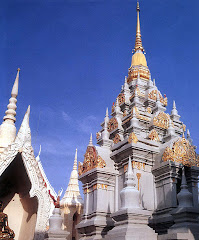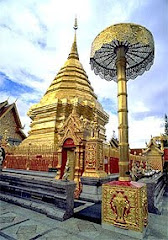Phra That Satcha is located in the area of Wat Lat Pu, Ban Tha Li. on the Highway 201, turn left at the junction to the Highway 2115 Tha Li - Ahi route. The Wat is 2 kilometers from Amphoe Tha Li Administrative Office. the architectural structure of Phra That Satcha consists of the blossomed lotuses with 3 layered petals, one meter high sprung around pagoda. The Phra That, similar in style to Phra That Phanom, is 33 meters high and topped with the white 7 tiered umbrella of sovereignty.
Tags:Phra That Satcha /Loei/Thailand /Wat Lat Pu





















